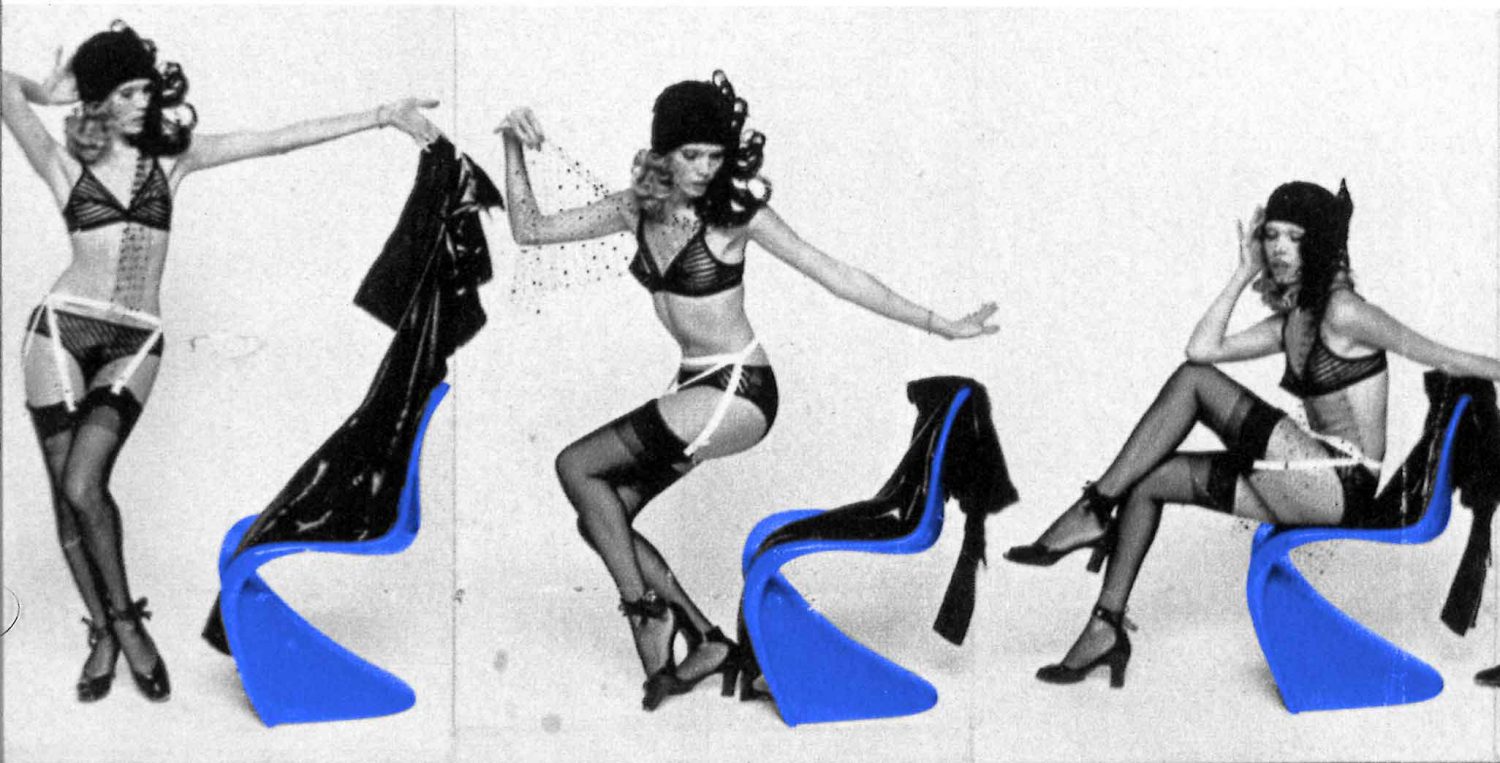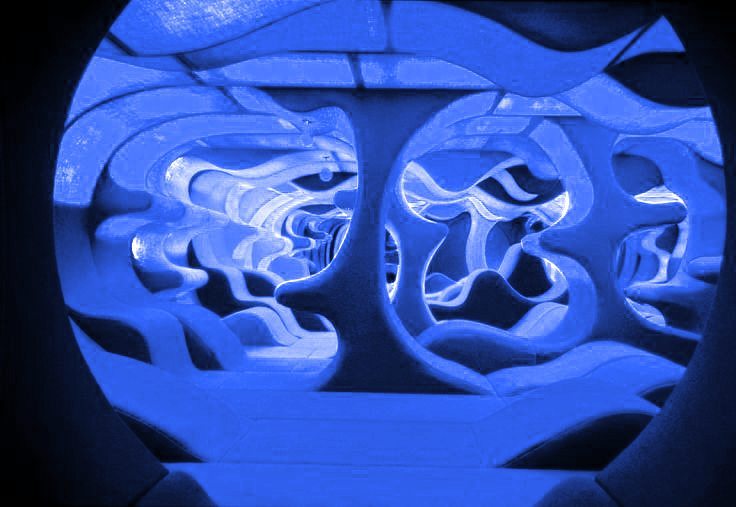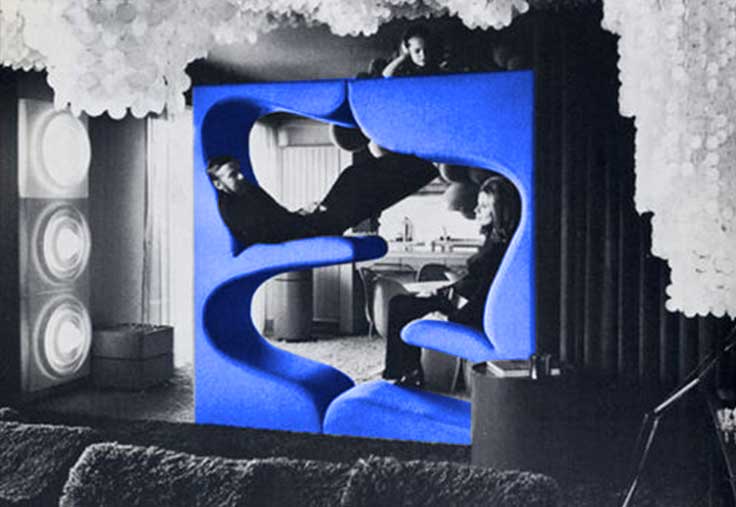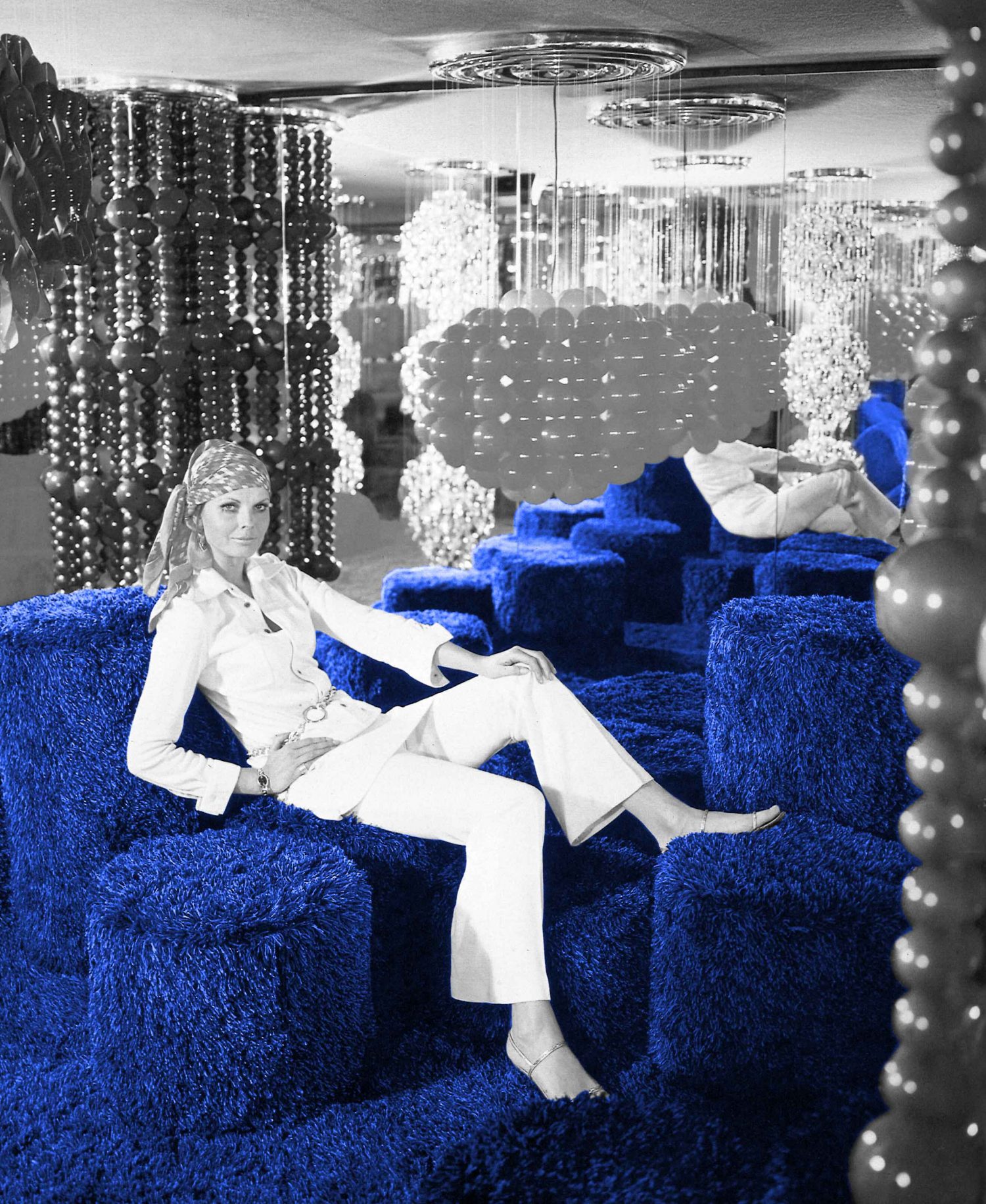INTERIOR
Inhabitable Landscapes

The Danish architect Verner Panton, who had formerly worked with Ärne Jacobsen in the development of the Ant Chair, became famous as a designer in 1960 when he designed the first chair made from a single piece of plastic by injection-moulding. When he finally managed to mass-produce this chair in 1968, it was known as the Panton Chair. Although he used the characteristic organic shapes of the Scandinavian design, Panton rejected the exclusive use of wood to embrace all kind of brightly-coloured new materials: Perspex, steel wire, inflatable plastic, polyurethane foam, etc.
Designers should now use these materials to create objects which up to now they could only see in their dreams.Verner Panton, 1984
In spite of being known for his furniture, Panton was trained as an architect and developed his own architecture and interior design projects. He designed a space for relax called Phantasy Landscape for the 1970 Visiona II exhibition in Cologne. It truly was an inhabitable sculpture where walls, floor and ceiling seemed moulded from a single piece. As in the Living Tower, an earlier piece of furniture that combined concave and convex curves, it encouraged the user to either sit or lie in several positions on several levels.
The piece of furniture that he designed for the Cologne exhibition, called 3-D Carpet, was the result of the juxtaposition of several pieces that followed the same idea and covered all the space of the room, as if the carpet has raised and rippled to wrap it. Thus, technology was used to build a completely dreamlike environment, defined by a constant variation and the break with the established spatial references.



